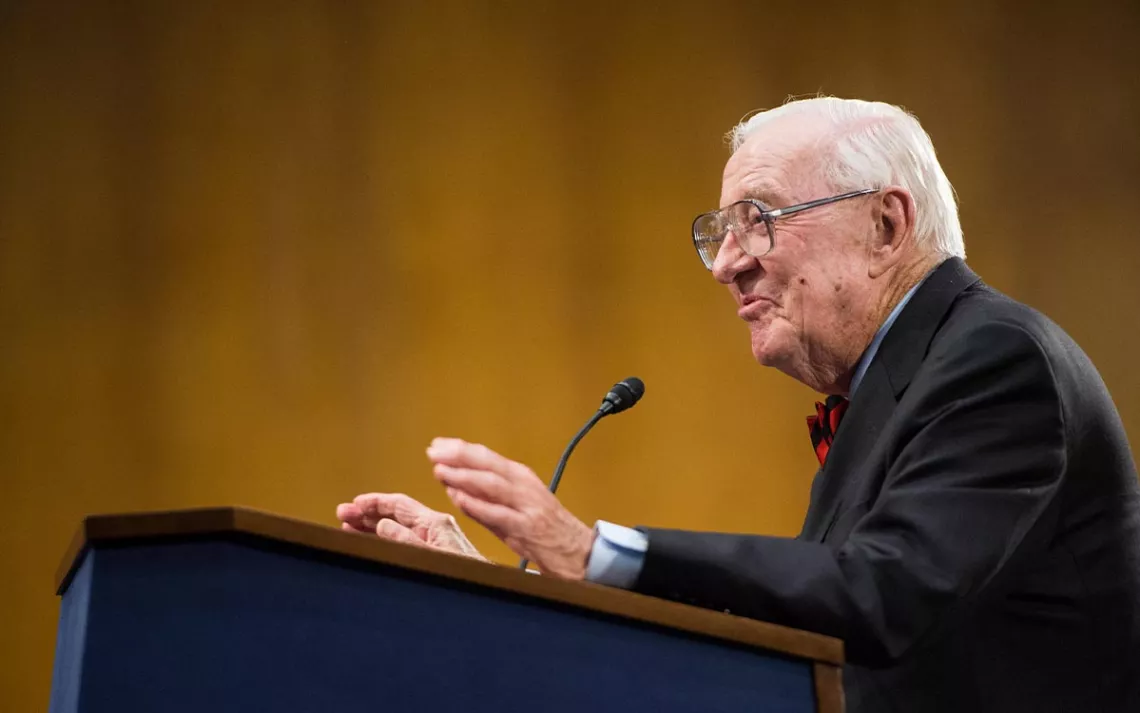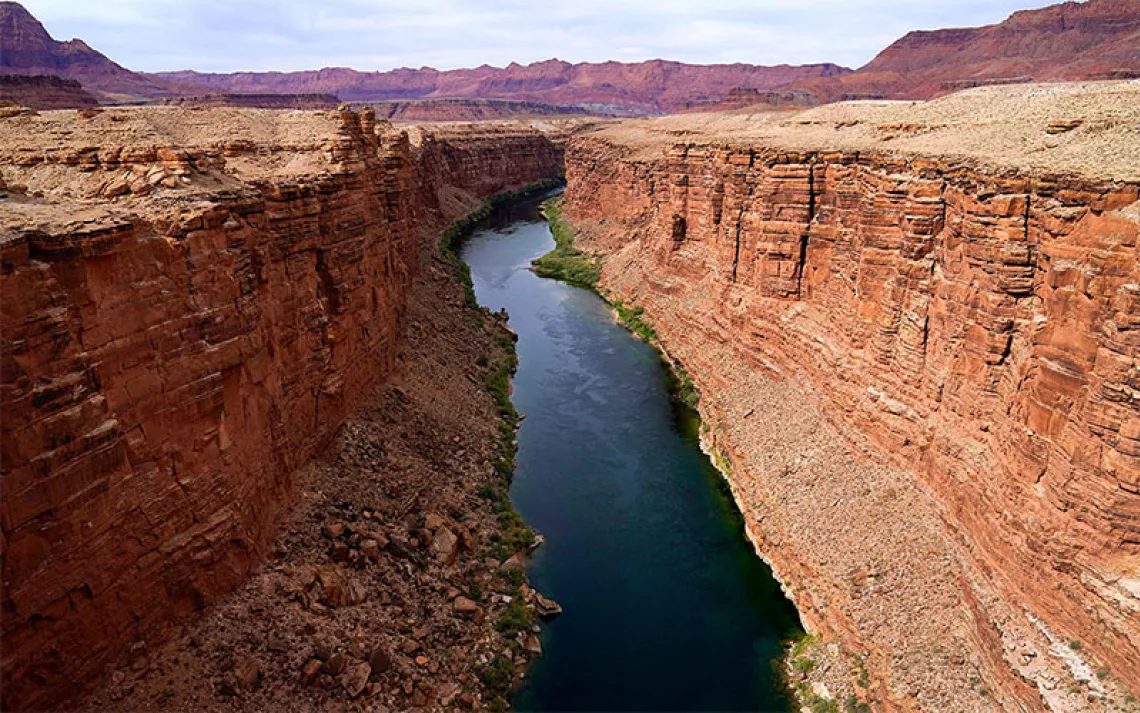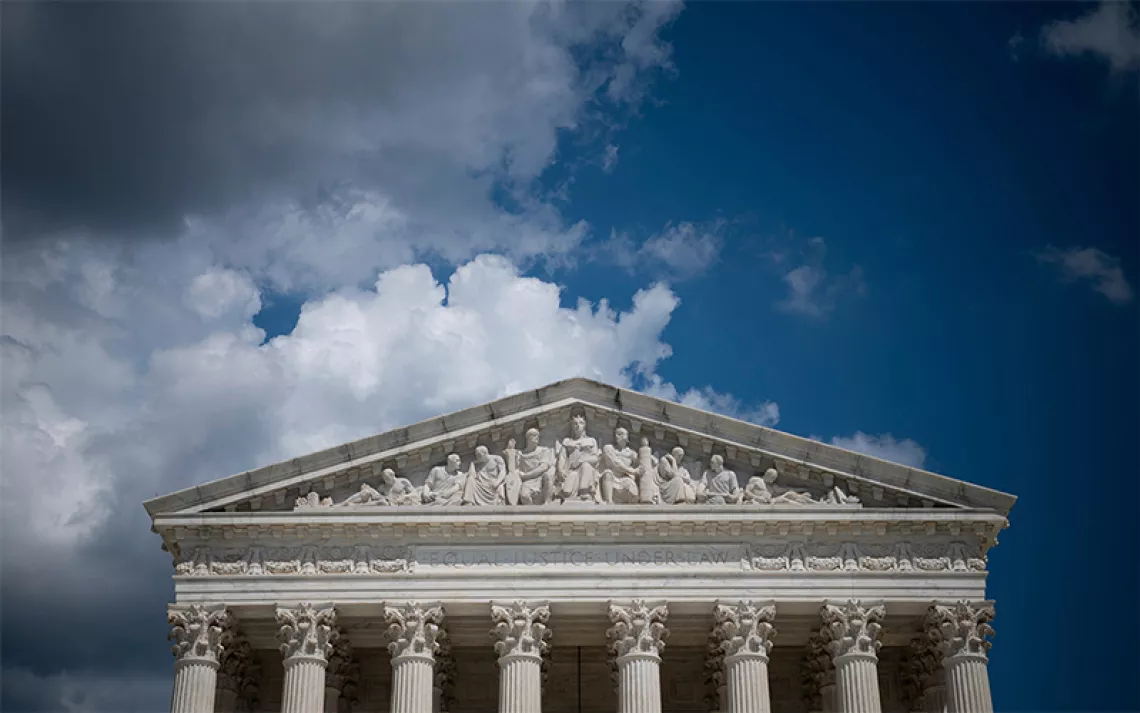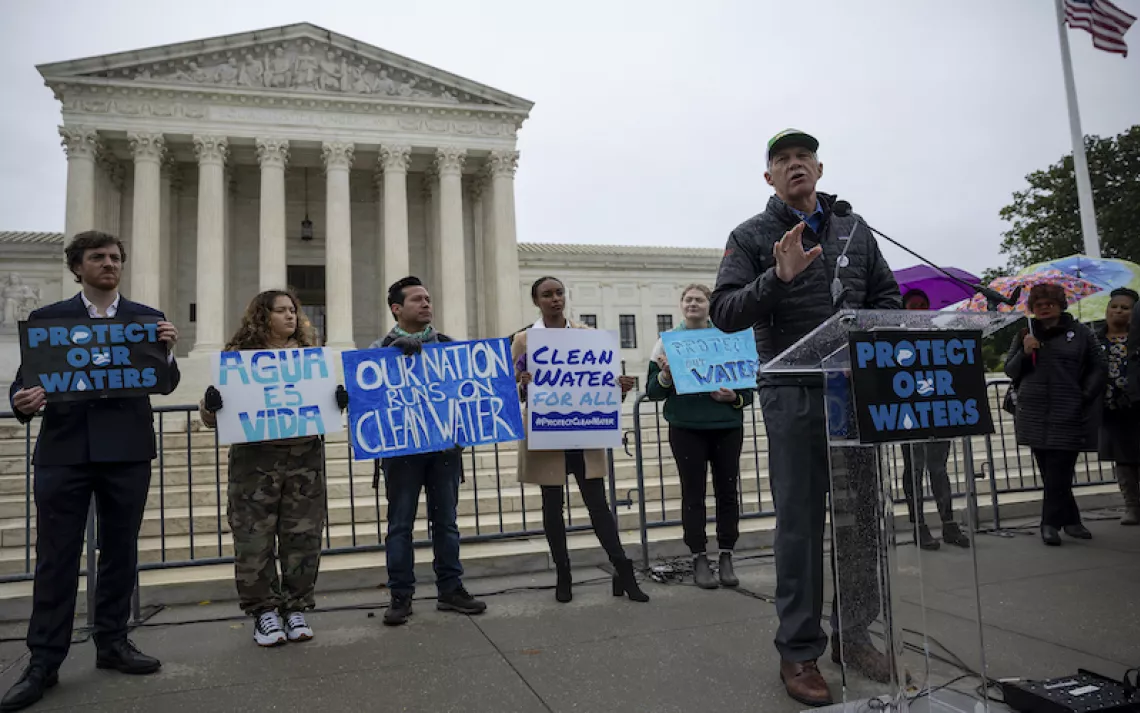A Tribute to Supreme Court Justice John Paul Stevens
The court's “most liberal conservative” was an important voice for the environment

Retired Supreme Court justice John Paul Stevens in the Dirksen Senate Office Building on Tuesday, April 29, 2014. | Photo by Bill Clark/CQ Roll Call (CQ Roll Call via AP Images)
“In my opinion, a person who has visited the critical habitat of an endangered species, has a professional interest in preserving the species and its habitat, and intends to revisit them in the future has standing to challenge agency action that threatens their destruction.” So wrote the late Justice John Paul Stevens, the “most liberal conservative” on the Supreme Court. The case was Lujan v. Defenders of Wildlife, a 1992 case in which Justice Antonin Scalia formed a majority and threw the plaintiffs out for lack of standing, because their injuries—the destruction of wildlife they studied—were too “speculative.”
In that case, as in so many others, Justice Stevens had a different, more capacious view of justice. Stevens understood the basic premise that Article III of our Constitution is meant to provide access to the federal courts, not block it. He ruled against the plaintiffs in the Lujan case because he decided that the consultation requirements of the Endangered Species Act did not apply to foreign nations, but he did not buy into Justice Scalia’s very stingy view of the plaintiffs’ right to be in federal court. Stevens understood that someone needed to have standing in court to speak on behalf of wildlife, trees, rivers, oceans, and the atmosphere—entities that have no ability to speak for themselves.
Justice Stevens died last week at the age of 99. He was among the longest-serving justices in the court’s history, a Nixon-appointed judge who would later distinguish himself as among its most liberal voices. While Stevens was not especially well-known for his environmental opinions—unlike, say, Justice William O. Douglas—he was nonetheless the author of several landmark environmental decisions.
The most important among those environmental rulings was Justice Stevens’s majority opinion in Massachusetts v. EPA—probably the most crucial environmental case of the 21st century. In that 2007 case about whether the federal government had the authority to regulate greenhouse gas emissions under the Clean Air Act, the Department of Justice tried every argument possible to get the plaintiffs kicked out of court for lack of standing. They argued that climate change harms were too speculative, that EPA’s inaction was not the cause of plaintiffs’ climate harms, and that forcing EPA to regulate greenhouse gases would not redress the harms.
Justice Stevens wasn’t buying it. As he then held, “EPA's steadfast refusal to regulate greenhouse gas emissions presents a risk of harm to Massachusetts that is both ‘actual’ and ‘imminent.’” There is, he went on to argue, a “substantial likelihood that the judicial relief requested” will prompt EPA to take steps to reduce that risk.” Justice Stevens’s decision in Massachusetts v. EPA stands as a beacon of hope for those seeking relief from climate catastrophe, now and in the future.
Another key part of Justice Stevens’s legacy is the so-called Chevron Rule, under which courts defer to an administrative agency’s reasonable interpretation of a statute, environmental or otherwise. Justice Stevens’s recap of that doctrine in Chevron v. Natural Resources Defense Council sums up his position nicely: “When a challenge to an agency construction of a statutory provision, fairly conceptualized, really centers on the wisdom of the agency's policy, rather than whether it is a reasonable choice within a gap left open by Congress, the challenge must fail.”
That’s legalese for the argument that Congress absolutely cannot regulate the fine details of every environmental problem—every pollution standard, every permitting provision. By necessity, Congress must allow agencies to “gap fill.” That is, agencies must have the leeway to adopt reasonable interpretations of congressional statutes and drill down into the specifications needed to control pollution. Some of the Supreme Court’s newer justices may not take kindly to this concept, given their antipathy toward the “administrative state.” But it’s not clear what they would substitute—either exceptionally detailed statutes (good luck with that) or an abandonment of regulation altogether. Justice Stevens’s careful reasoning behind the Chevron doctrine may very well prove immune to future challenges.
To his credit, Justice Stevens would not accept just any rationale proffered by agencies to justify their decisions. In another losing fight, Entergy Corporation v. Riverkeeper, Inc., a 2009 case about the interpretation of the Clean Water Act, an environmental coalition challenged the extremely weak rule the EPA had adopted to control water pollution discharges from power plants. Justice Scalia, again the foil, ruled that EPA could conduct a cost-benefit analysis to justify a weak rule. Justice Stevens, notwithstanding the Chevron doctrine, could not agree: “I am convinced that the EPA has misinterpreted the plain text of § 316(b). Unless costs are so high that the best technology is not ‘available,’ Congress has decided that they are outweighed by the benefits of minimizing adverse environmental impact.” Here Stevens recognized a clear directive from Congress—to control pollution from power plants—and saw through the facade of cost-benefit analysis EPA used to duck Congress’s intent.
Make no mistake, Justice Stevens was not always an environmental advocate. He ruled against environmental organizations many times: in Marsh v. Oregon Natural Resources Council and Robertson v. Methow Valley Citizens Council, to name just a couple. But Stevens was always fair. He understood the importance of citizen access to federal courts, and he was no anti-regulation ideologue. He embodied the best characteristics of a fair and impartial judge.
Long live his legacy.
 The Magazine of The Sierra Club
The Magazine of The Sierra Club







